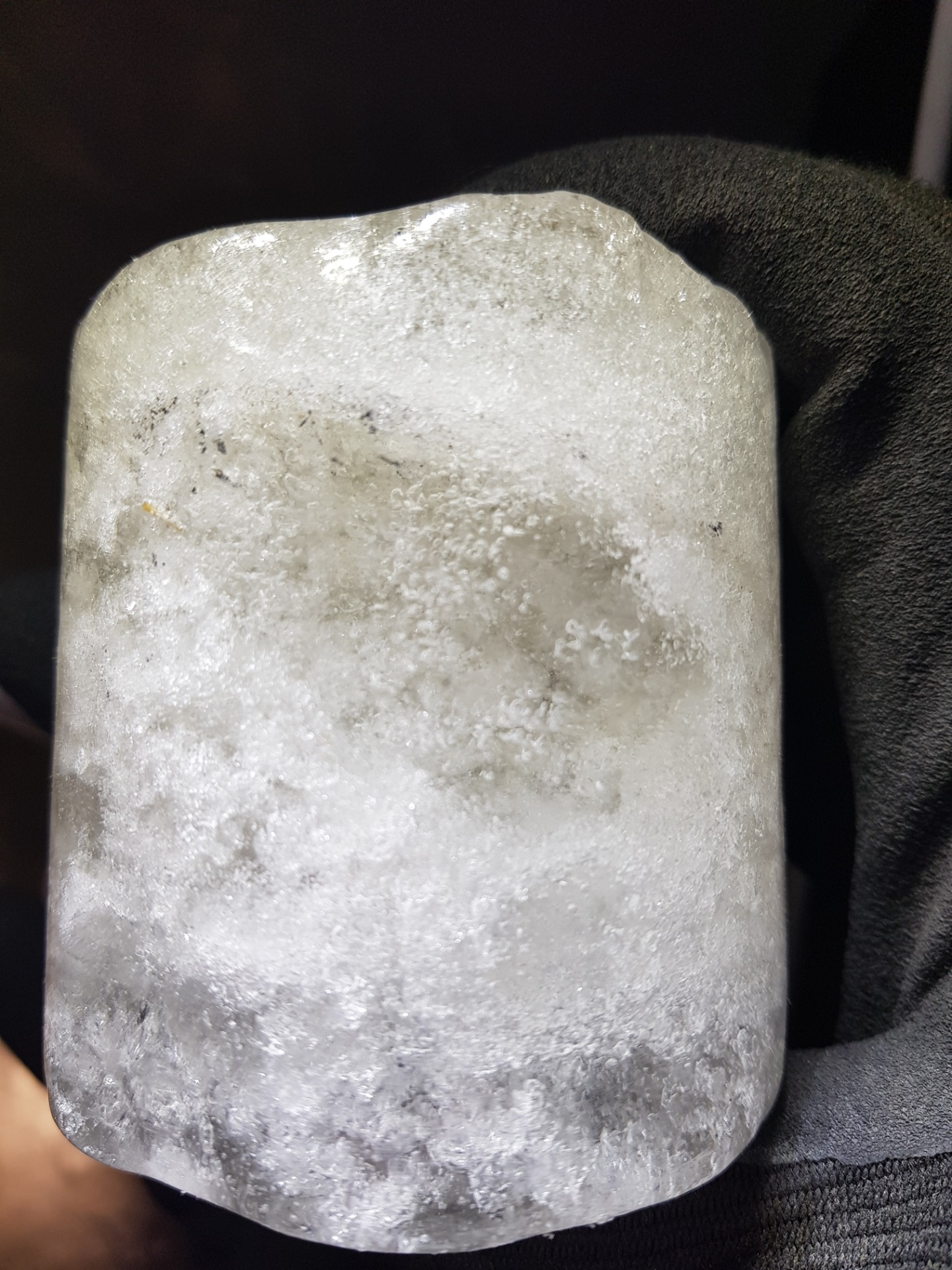Glacier ice and its origin
02.07.2019
A long journey has now come to an end. The rest of the team left Zermatt today. We have all arrived at home and are now starting with the final report.
We would like to use this blog entry to quote a good text about glacial ice from an information board in the glacier:
- Glacier ice: If you take a close look at glacier ice, you will notice there's more than first meets the eye. Rock fragments are often trapped in the ice or even rubbish. Numerous air bubbles are tremendously important to researchers because they can be used to determine how old the glacier ice is. Researchers even get indications about the composition of the atmosphere at the time of the ice formation. But how is glacial ice formed?
- Origin: Different conditions must be fulfilled for glacier ice to form. Precipitation is needed that constantly feeds the glacier. In addition, the temperatures must be below 0° Celsius so that the precipitation falls in the form of snow. If more and more snow keeps falling, it compresses more and more strongly under its own weight - 'old snow' is formed. The snow crystals lose their beautiful structure in the process. Less and less air finds room between the individual snow granules. The snow becomes denser. After a year, corn snow has been formed. In new snow there is about 90% air; in corn snow there is only around 30%. Through more and more overlaying, the snow becomes more and more dense. Glacier ice forms in which the percentage of air amounts to less than 20%. Glacier specialists call this process metamorphosis. When the body of ice has become massive enough, it begins to move. Like a very viscous liquid, it flows towards the valley. Eventually it reacher areas with higher temperatures and begins to melt. The melting process can be easily observed at the edge of a glacier.

